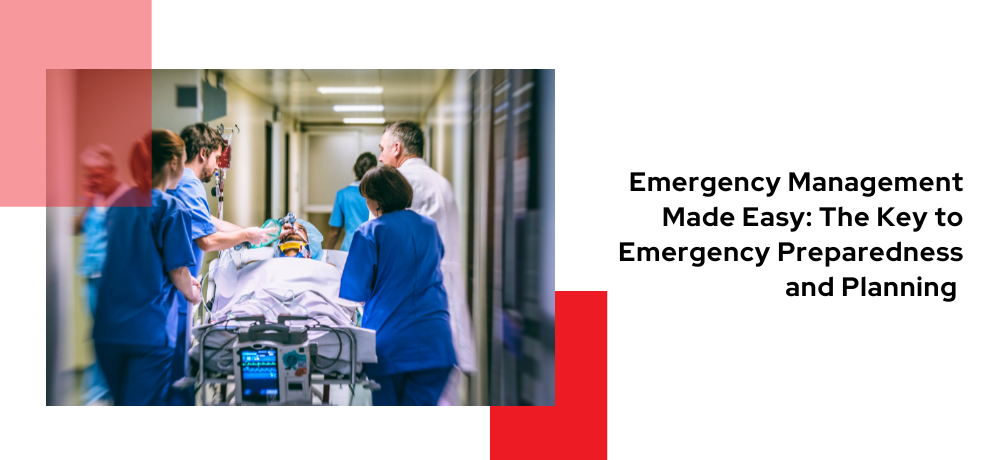Emergency Management Made Easy: The Key to Emergency Preparedness and Planning
Categories: Emergency Operations Centre , Emergency Planning , Emergency Preparedness

Natural disasters, severe weather, pandemics, and accidental and intentional human-made emergencies can disrupt business operations and cause significant losses. To minimize the impact of such events on business operations and ensure the health and safety of staff, organizations need to have an Emergency Management Program in place. This program should include measures to identify and mitigate hazards and threats and establish response plans to facilitate a quick recovery.
Five Essential Components of a Successful Emergency Preparedness Program
1. Risk Assessment
The first step in emergency management is to identify the risks that your business may face. A comprehensive Hazard Identification and Risk Assessment (HIRA) should be completed to determine the likelihood and impact of different types of disasters will have on an organization. This assessment will help businesses prioritize their preparedness efforts and allocate resources accordingly, and is the foundation of the Emergency Management Program.
2. Emergency Planning
Once the risks have been identified, it's time to develop an emergency management plan to address the highest risks. Each plan must include role-based emergency procedures or Job Actions Sheets for each level of staff within the organization. Staff often ask, “What am I supposed to do?”. It is important to incorporate the Incident Management System (IMS) within the Job Action Sheets to clearly establish the Chain of Command. Each plan should include pre-drafted crisis communications to be able to inform internal and external stakeholders easily and quickly. The plan should also integrate with the Business Continuity Plan to help maintain essential operations throughout the response and recovery phases.
3. Response
In case of an emergency, a quick and effective response is crucial. Real-time status reporting through the use of digital forms and reporting dashboards can provide managers and senior leaders with immediate status updates to identify risks and where resources and support are needed most.
4. Recovery and Post Incident Review
The recovery phase is equally important. Post incident procedures guide organizations through the necessary activities to return to a pre-emergency state. This phase provides an opportunity to evaluate the response and update plans as needed.
5. Training and Education
Having an emergency management plan is not enough. Employees need regular and consistent training on how to respond to various emergencies. Training and exercises will not only test the plans but also give staff the opportunity to practice their roles and develop the confidence and competence needed to respond effectively.
Emergency management is an essential part of any successful business. Businesses can ensure that they are prepared in advance and minimize the impact of an emergency by completing a risk assessment, developing emergency management plans to address the risks, holding post incident reviews, and providing training and education. Don't wait until it's too late – start your emergency management planning today.
At Get Ready, our experienced team of experts can provide guidance and support in developing your Emergency Management Program and help your business get back to normal operations as quickly as possible.
Get in touch with us today!
To learn more about the services we offer, please click here. To get in touch with us, please click here



